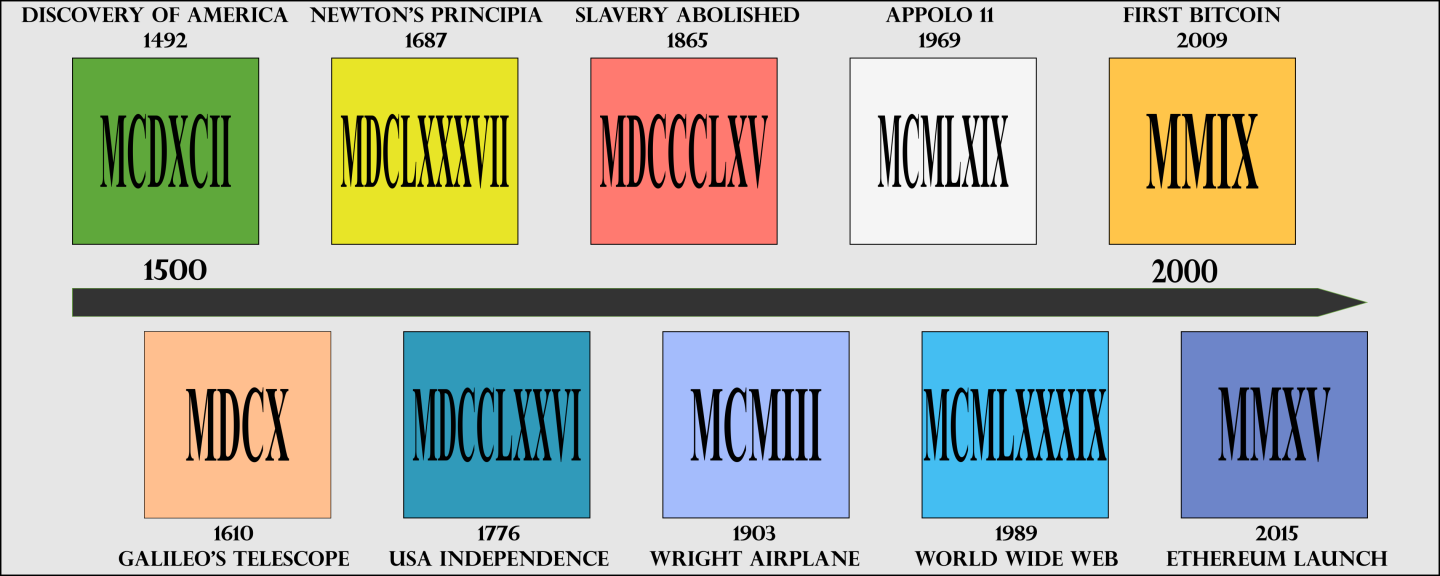Romanus Numerus Brings Historical NFTs To OpenSea Through A BitColors Collaboration

Non-fungible token collections can serve many purposes. Romanus Numerus's primary goal is to bring history to life through modern technology. Immortalizing historical events on the blockchain helps merge the past with the present and future.
What Is Romanus Numerus About?

As the name suggests, Romanus Numerus is a collection of Roman numbers in non-fungible token format. The collection will be available through the OpenSea marketplace and spans 100 critical dates in the history of humankind. Additionally, it also spans 100 Roman numbers, from 1 to 100. Every NFT is unique and hand-crafted, rather than opting for the more traditional auto-generated artwork option.
The dates depicted in this NFT collection all reflect historical events. Every NFT has a description to explain why that date is important and what happened. Moreover, every non-fungible token is a piece of the puzzle depicting the evolution of humanity throughout the centuries. Having the ability to acquire a piece of history is now possible with the help of NFT technology and the Ethereum blockchain.
So far, the team has agreed on over 80% of the historical dates they aim to immortalize on the Ethereum blockchain as NFTs. Community members can suggest dates they would like to see included by contracting the Romanus Numerus team on Twitter. A lot has happened throughout the history of humankind, and it is worth remembering as many of these events as possible.
A collection of 200 NFTs tends to stand out due to their scarcity and rarity. However, that limited amount makes sense given the overarching theme of this set. It is also the first collection to put Roman Numbers front and center. Moreover, the project attracts much attention, partially thanks to the collaboration with BitColors.
The BitColors Influence

Rather than putting the dates and numbers on a white, black, or transparent background, Romanus Numerus partners BitColors. The latter project has created hand-made colors and tokenized them as NFTs. It is an unusual concept attracting much attention from investors and creators alike. In addition, the use of custom colors can make any derived NFT collection stand out, including Romanus Numerus.
Moreover, the BitColors NFT collection - spanning 1,000 colors - has been showing up across various NFT projects lately. Romanus Numerus is one of the first to partner with this project and links the colors with the dates on the individual NFTs. A good example of this collaboration is the MMIX NFT, marking the creation of the first Bitcoins and using #ffc54a as its color.
The BitColors collection on Opensea notes over 140 ETH in volume traded. Moreover, the NFTs are owned by 337 unique addresses, yet only 735 of the 1,000 items are currently listed on the marketplace. Projects derived from this set of unique colors will bring value to themselves and the BitColors initiative, establishing an inter-connected NFT ecosystem.
Closing Thoughts
Interesting opportunities become available when NFT projects work together or leverage one another's strengths. For example, the Romanus Numerus collection aims to immortalize historical events on the blockchain and adds a dash of color to its collection by collaborating with BitColors. Using hand-drawn colors to establish a different hand-drawn NFT collection makes sense and highlights the importance of adding uniqueness to non-fungible tokens.
Moreover, the industry appears to gravitate toward scarcer collections with fewer NFTs to collect. Both BitColors and Romanus Numerus opt for a similar approach, although their numbers are different. Exhibitions of thousands of NFTs are great for profile picture projects, but opting for a lower supply appears to be the way to go when it comes to utility and value.
Check our guide of the most promising crypto




